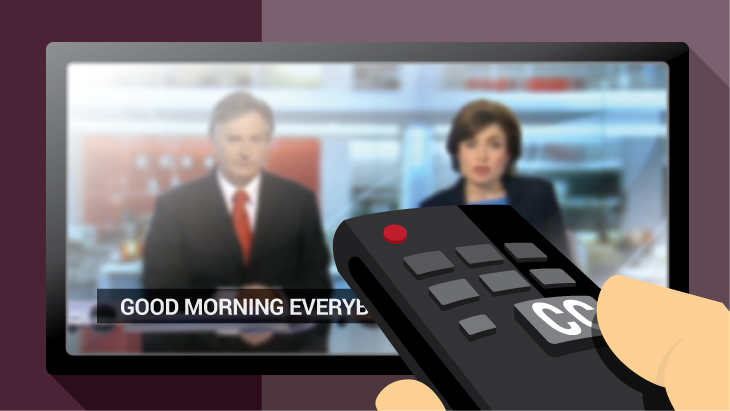The accuracy of closed captioning is important. It affects nearly 40 million Americans who are hard of hearing or functionally deaf.
Next time you’re at the gym watching the TV scroll closed captioning, notice how many times “there” should be “their.” What about homophones like carat, caret and carrot?
We’ve all seen the viral videos of closed captioning gone wrong, but if you’re deaf or hard of hearing, it’s not very amusing at all.
If you hear well, you may not have considered the impact of closed captioning and subtitles.
Closed captioning for the hearing impaired connects these viewers with the world that most of us take for granted.
Next time you’re at the movies, cover your ears and think about what it would be like to just see pretty pictures on the screen.
Could watching a video with no way to understand who is speaking or what they’re saying frustrate or make you angry?
While we can all agree that accessibility is an important human right, there are many businesses and organizations that still fail to caption their streaming video content.
For organizations that do caption their web content, they may try the least expensive solution first.
If you’re using an inferior service, or worse yet, a computerized program to create the broadcast text, the quality of the captions suffer.
This results in misspellings, wrong word/context issues and outright mistakes on homophone selection.
Anyone who’s ever used Siri, has recognized the difficulty in a voice to text automatic transcription service.
Even the best-in-class computer translations of the human voice have a lot of inaccuracies. This technology still has a long way to go.
In the case of closed captioning, there is no substitute for human quality control.
Caption Well and Caption Often
FCC rules require that broadcast content have accurate closed captions.
Increasingly, videos accessed via streaming media are offering captioning because it’s the right thing to do.
Today, however, the straight-to-streaming content is pretty much unregulated.
For companies and organizations that air their videos on the newest streaming media, this means an uneven landscape: Some videos are captioned and some are not.
Imagine missing out on reaching this potential audience. Imagine how frustrating it must be to have no captions – or to have captions so poorly implemented that valuable content simply isn’t communicated.
Missing, inaccurate, or incomplete captioning forces the hearing impaired to rely on context to interpret your content – which could ultimately lead to valuable customers turning away from your message.
The frustration felt by this audience could result in them turning away, which will most certainly affect your reach.
Setting aside the obvious misspellings for a moment, this issue is about both quality and quantity.
The level of exactness between the captions and the audio can make or break your video content.
Deaf and hearing-impaired people sometimes find themselves struggling to connect to the hearing world.
The connection is even more tenuous without that link to the rich content of TV and video.
The bottom line is this: Consider your entire audience.
With 40 million U.S. residents who are deaf or hard-of-hearing, chances are they’re in your audience.
Failing to reach them through poor quality or missing closed captioning is a disservice to that audience—and your organization.

Ben Kalb
Ben is a broadcast engineer and creator of StationDrop. With a longevity in the broadcast industry, over 20 years, Ben has experience with everything from 1” tape reels to completely file-based workflows. Recently, Ben has broken into the world of coffee. Ask him about his latest brew.


